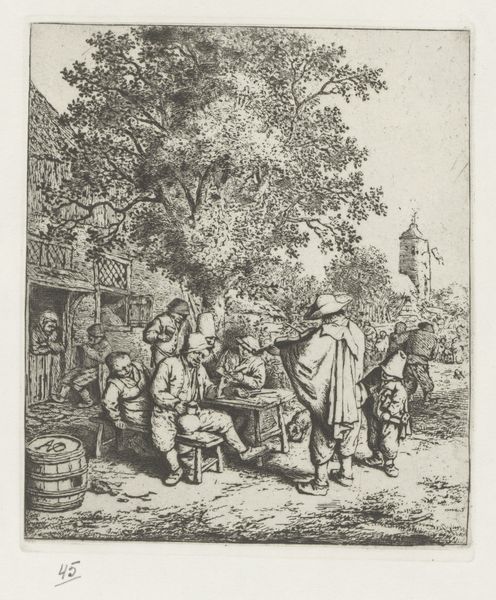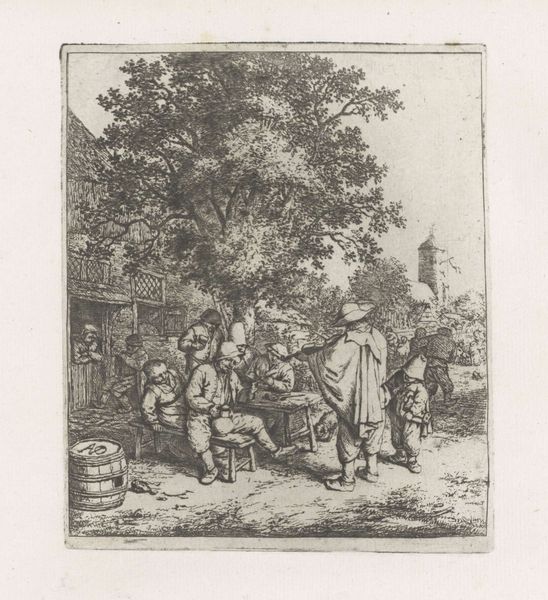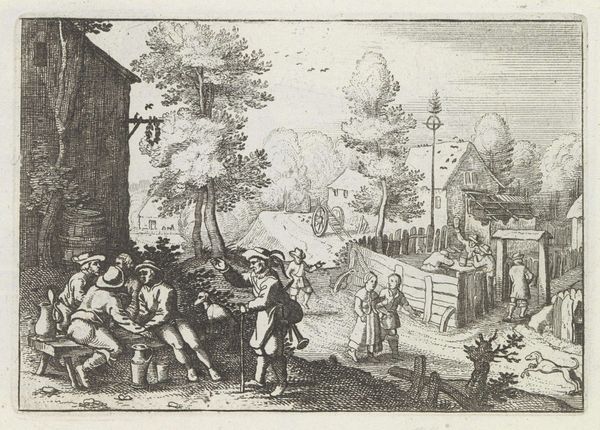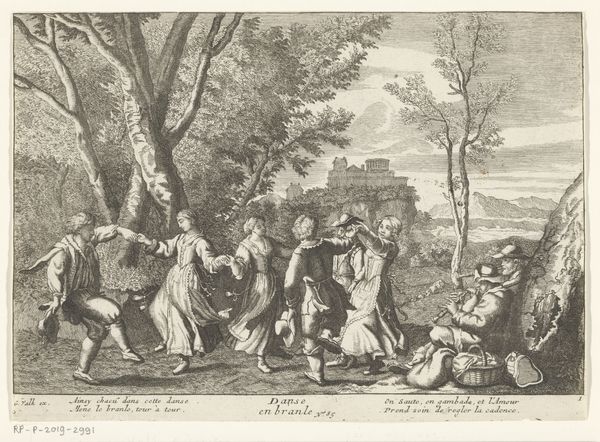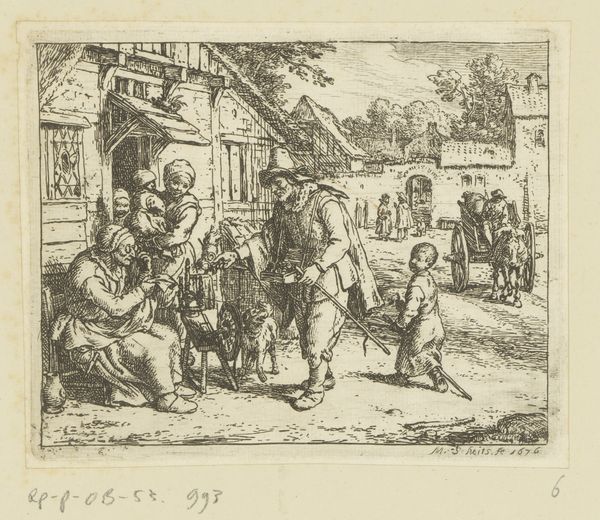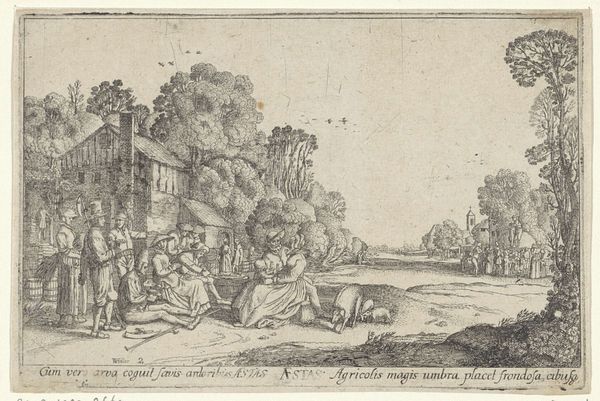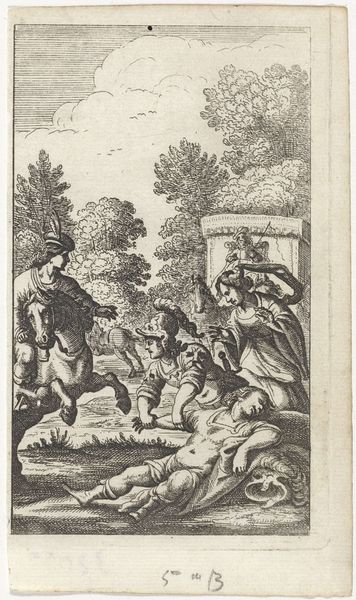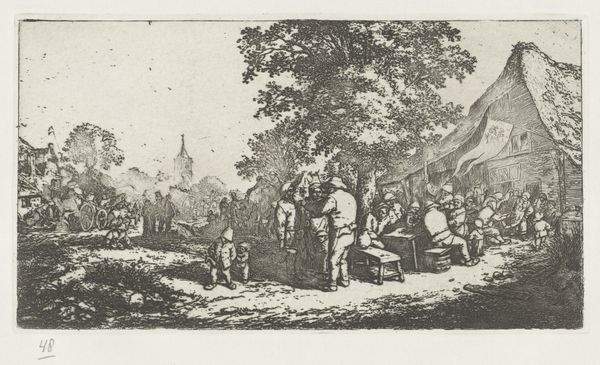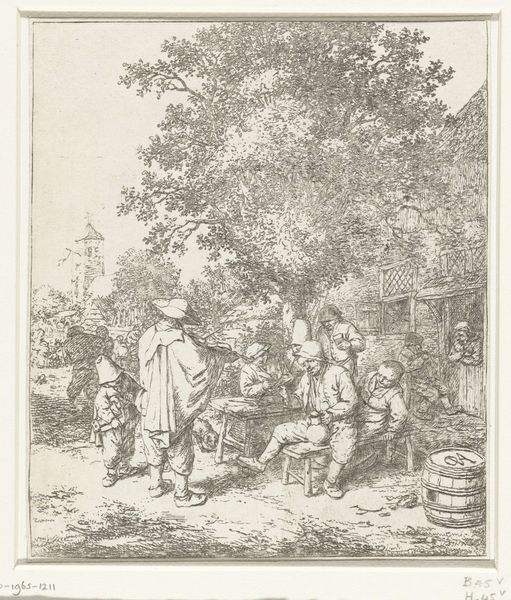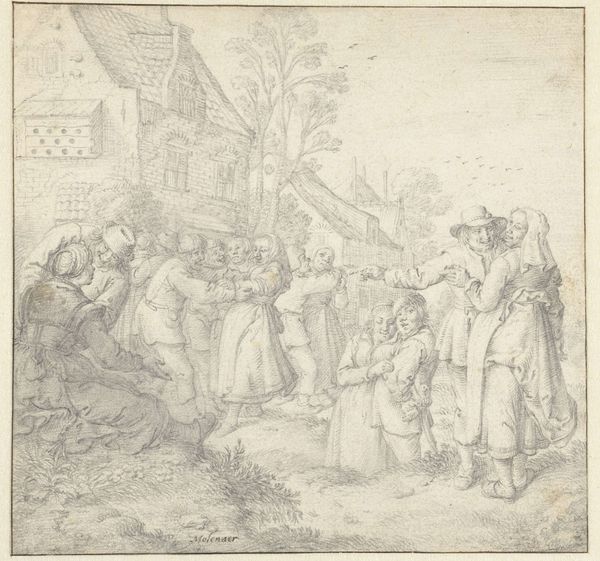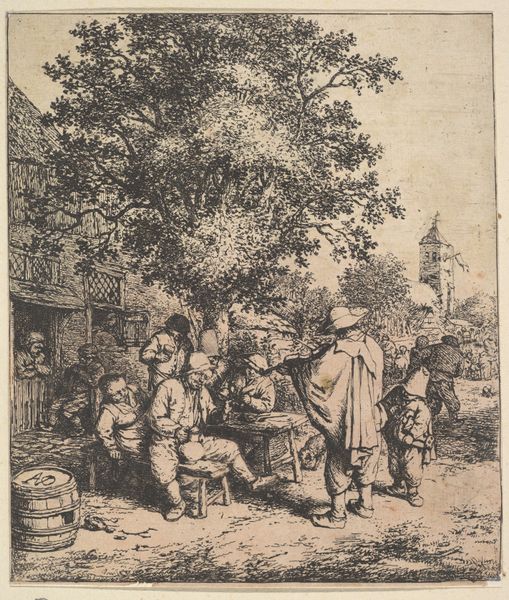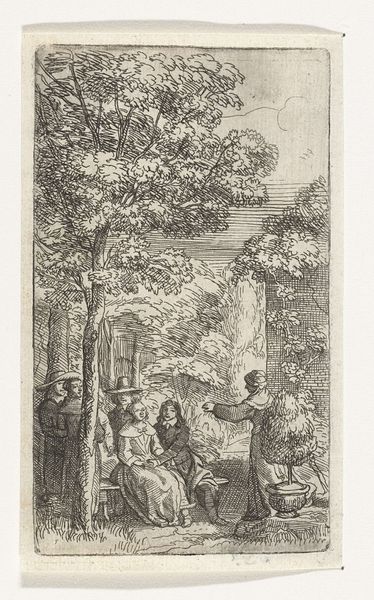
print, etching
#
dutch-golden-age
# print
#
etching
#
landscape
#
genre-painting
Dimensions: height 113 mm, width 160 mm
Copyright: Rijks Museum: Open Domain
Johannes Arnoldus Boland made this etching, "Boerengezelschap voor een herberg," depicting peasants outside a tavern, sometime in the late 19th century. It offers a window into how the Netherlands saw itself during a period of nation-building. Here, Boland draws on well-worn visual codes. He's referencing the Dutch Golden Age paintings of the 17th century, especially the work of artists like Jan Steen, who often depicted boisterous scenes of everyday life. By evoking this earlier period, Boland’s print contributes to a narrative of Dutch cultural identity rooted in the traditions of the common folk. But it’s also a selective vision. Boland presents an idealized, perhaps romanticized, view of rural life. For art historians, understanding this image means looking at it alongside other historical sources. We can ask, for instance, how does this compare to the realities of agricultural labor at the time? Was it a conscious effort to construct a particular image of the Netherlands? The answers help us appreciate the complex interplay between art and national identity.
Comments
No comments
Be the first to comment and join the conversation on the ultimate creative platform.
